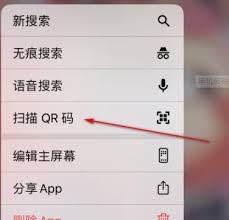深入研究表单提交方式:GET/POST
时间:2005-03-01 来源:zming_5000
大家知道目前表单提交的方式有GET和POST。我在这里不多说什么,给大家看一个以GET方式提交的表单的请求:
GET /cgi-bin/tech/method.cgi?GET=GET HTTP/1.1
Accept: image/gif, image/x-xbitmap, image/jpeg, image/pjpeg, application/vnd.ms-powerpoint, application/vnd.ms-excel, application/msword, */*
Referer: http://localhost//other.html
Accept-Language: zh-cn
Accept-Encoding: gzip, deflate
User-Agent: Mozilla/4.0 (compatible; MSIE 5.01; Windows NT 5.0)
Host: localhost:8080
Connection: Keep-Alive
这个请求是我们通过这个HTML代码发出的:
<form action="http://localhost:8080/cgi-bin/tech/method.cgi" method="GET">
<input type="text" size="10" value="GET" name="GET">
<input type=submit value="GET方式">
</form>
这个请求已经超出了我们研究的范围,我们只研究其中的第一行。其中,第一个"GET"说出了提交的方式,是以GET方式提交的;中间的就是提交给服务器上哪个程序,前面一部分"/cgi-bin/tech/method.cgi"就是我们HTML的form中action的内容,而后面的"GET=GET"就是HTML的form中,input的内容:我们发现IE已经把这个表单的内容转换成特定格式了。在Perl中,通过$GET=$ENV{'QUERY_STRING'}获得以GET发送的数据。
我们再看一个以POST方式提交的表单的请求:
POST /cgi-bin/tech/method.cgi HTTP/1.1
Accept: image/gif, image/x-xbitmap, image/jpeg, image/pjpeg, application/vnd.ms-
powerpoint, application/vnd.ms-excel, application/msword, */*
Referer: http://localhost//other.html
Accept-Language: zh-cn
Content-Type: application/x-www-form-urlencoded
Accept-Encoding: gzip, deflate
User-Agent: Mozilla/4.0 (compatible; MSIE 5.01; Windows NT 5.0)
Host: localhost:8080
Content-Length: 9
Connection: Keep-Alive
POST=POST
同样给出HTML:
<form action="http://localhost:8080/cgi-bin/tech/method.cgi" method="POST">
<input type="text" size="10" value="POST" name="POST">
<input type=submit value="POST方式">
</form>
我们发现其中的数据跑到了最下面。在Perl中,通过read(STDIN,$POST,$ENV{'CONTENT_LENGTH'})获得以POST发送的数据。我记得GET发送数据最多只能1024字节,而POST好像很大很大!
思考:如果我有这么一段HTML代码,它将会出现什么问题呢?
<form action="http://localhost:8080/cgi-bin/tech/method.cgi?GET=GET" method="POST">
<input type="text" size="10" value="POST" name="POST">
<input type=submit value="GET/POST方式">
</form>
这个代码在很多程序上可能用到过,但是大多数人不会好好的想一想,究竟哪些内容是以GET发送的,哪些内容是以POST发送的。我们看看它的请求是什么:
POST /cgi-bin/tech/method.cgi?GET=GET HTTP/1.1
Accept: image/gif, image/x-xbitmap, image/jpeg, image/pjpeg, application/vnd.ms-
powerpoint, application/vnd.ms-excel, application/msword, */*
Referer: http://localhost//other.html
Accept-Language: zh-cn
Content-Type: application/x-www-form-urlencoded
Accept-Encoding: gzip, deflate
User-Agent: Mozilla/4.0 (compatible; MSIE 5.01; Windows NT 5.0)
Host: localhost:8080
Content-Length: 9
Connection: Keep-Alive
POST=POST
哈!原来是以POST发送的。但是,你一定发现了有一部分数据放在了第一行,就是和GET的情况一样的。其实这个例子很典型,是POST和GET混发!
不相信你在Perl中,用read(STDIN,$POST,$ENV{'CONTENT_LENGTH'})和$GET=$ENV{'QUERY_STRING'}看看,到底哪个里面有"GET=GET"这个数据。
我给大家提供设备,大家自己去研究研究:
HTML部分:
<html>
<head>
<title>Get-Post</title>
</head>
<body>
<form action="/cgi-bin/tech/method.cgi" method="GET">
<input type="text" size="10" value="GET" name="GET">
<input type=submit value="GET方式">
</form>
<form action="/cgi-bin/tech/method.cgi" method="POST">
<input type="text" size="10" value="POST" name="POST">
<input type=submit value="POST方式">
</form>
<form action="/cgi-bin/tech/method.cgi?GET=GET" method="POST">
<input type="text" size="10" value="POST" name="POST">
<input type=submit value="GET/POST方式">
</form>
<form action="/cgi-bin/tech/method.cgi?name=Hackfan&age=16&[email protected]" method="POST">
<input type="text" size="10" value="Suzhou" name="address">
<input type="text" size="10" value="msger.net" name="homepage">
<input type="text" size="10" value="106814" name="qq">
<input type=submit value="复杂GET/POST方式">
</form>
</body>
</html>
Perl部分:
#!c:perlinperl.exe
$│=1;
print "Content-type:text/html
";
print "发送方式:$ENV{'REQUEST_METHOD'}
";
if(read(STDIN,$POST,$ENV{'CONTENT_LENGTH'})){
print "POST得到的数据:$POST
";
}
if($GET=$ENV{'QUERY_STRING'}){
print "GET得到的数据:$GET
";
}
$METHOD="POST";
for($i=0;$i<=1;$i++){
foreach(split(/&/,$$METHOD)){
$_=~s/+//g;
($name,$value)=split(/=/,$_);
$name=~s/%([a-fA-f0-9][a-fA-f0-9])/pack("C",hex($1))/eg;
$value=~s/%([a-fA-f0-9][a-fA-f0-9])/pack("C",hex($1))/eg;
$$METHOD{$name}=$value;
}
$METHOD="GET";
}
$METHOD="POST";
for($i=0;$i<=1;$i++){
print "Hash形式的$METHOD数据遍历:
";
foreach(keys %{$METHOD}){
print "$".$METHOD."{".$_."}=$$METHOD{$_}
";
}
print "
";
$METHOD="GET";
}
exit;
####代码结束####
好了,我要说的是,搞这个研究究竟有什么意义呢?
意义是:让你知道,用户提交的数据哪些是用POST方式,哪些使用GET方式的!
其实我上面那段Perl代码已经包括了很多的技术。你通过阅读就可以知道%GET里面放的是用GET方式提交的,%POST同理!
如果你对我编写的Perl代码感兴趣,欢迎切磋:QQ:106814。至于我如何获得IE发送来的请求的,我要说我是用Perl编的一个Server监听8080端口,我是不是像欧姆一样搞研究大多东西都自己编写(当然,让我编写一个操作系统就有点难度了,不过WebServer凑合)?开玩笑呢!










